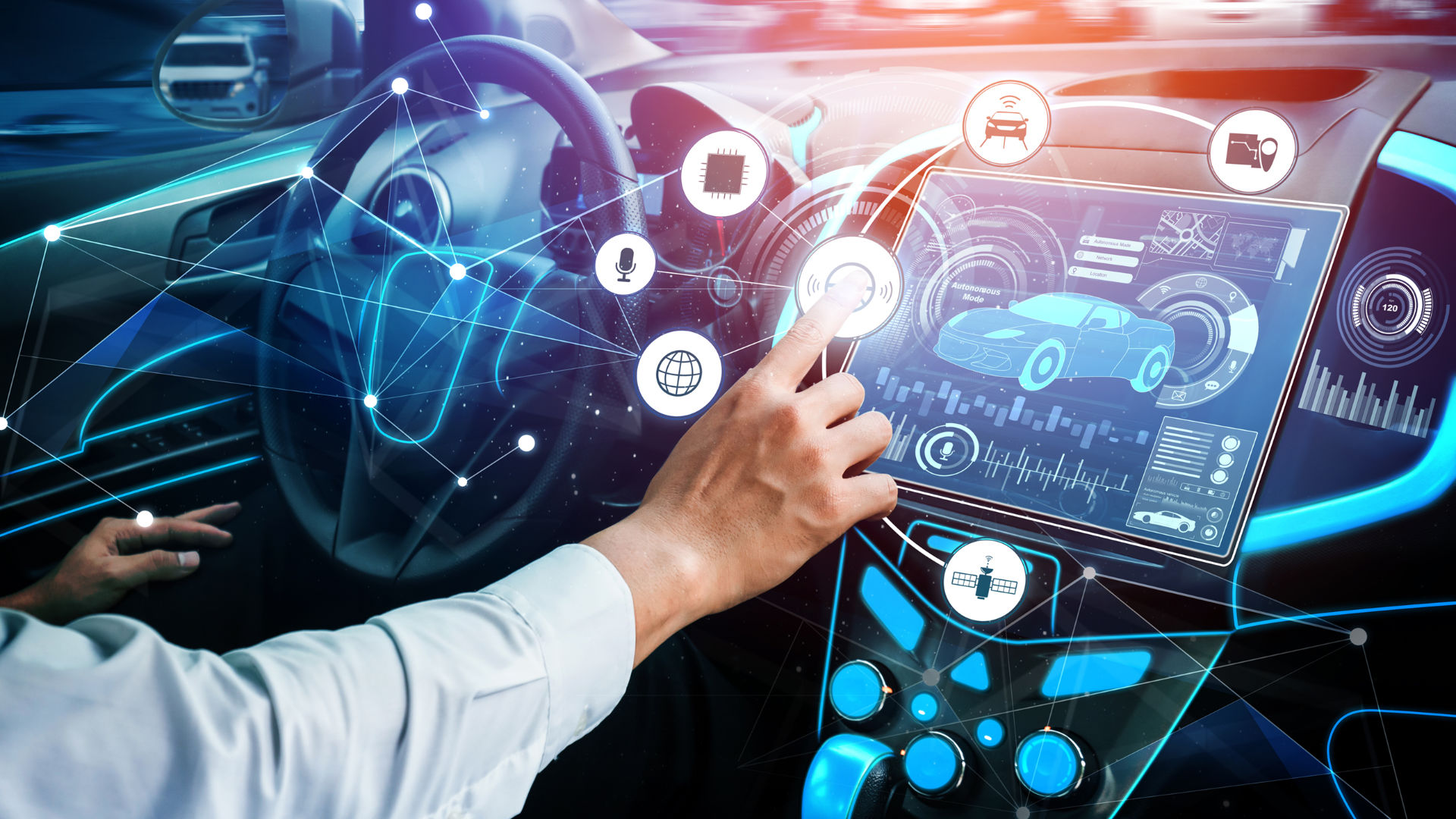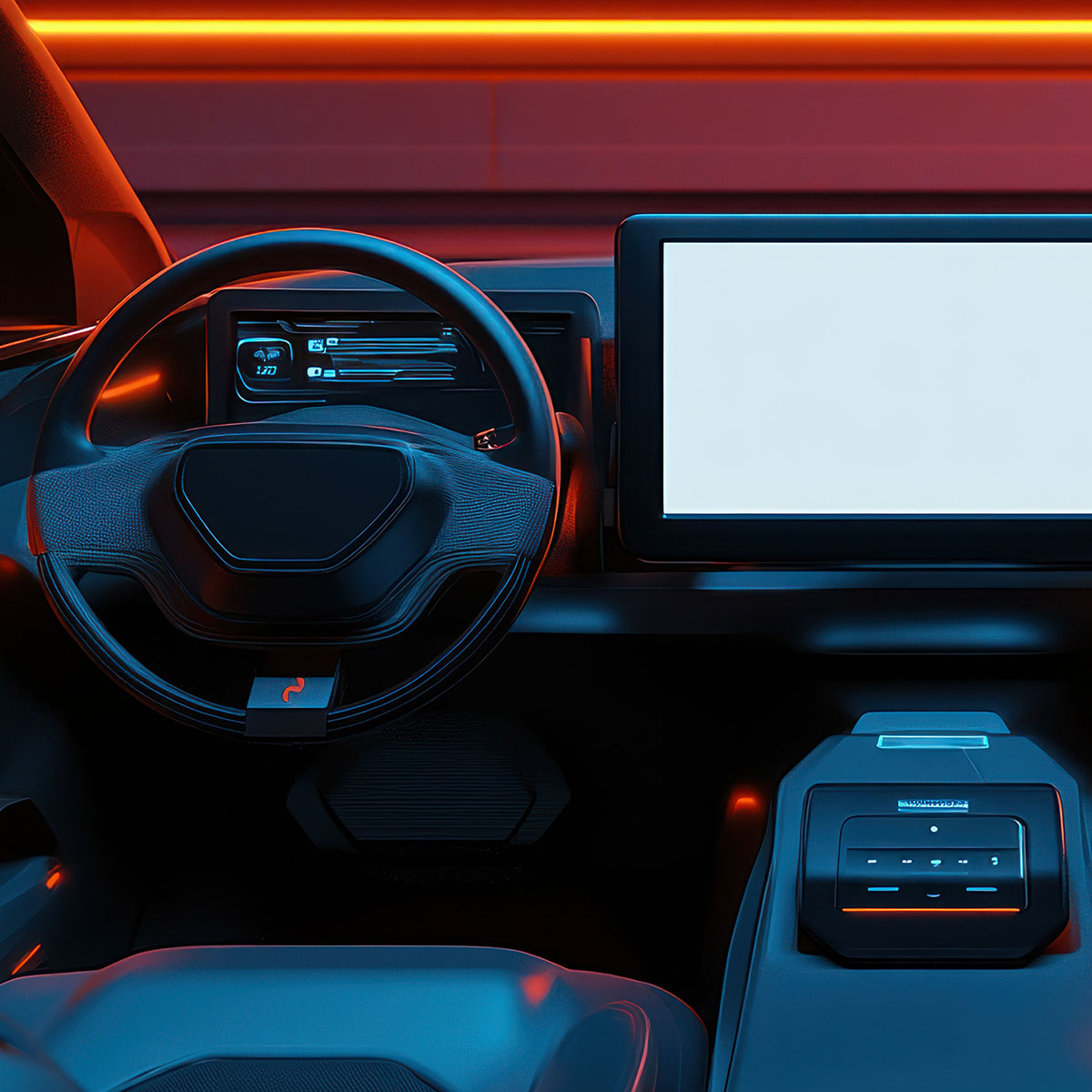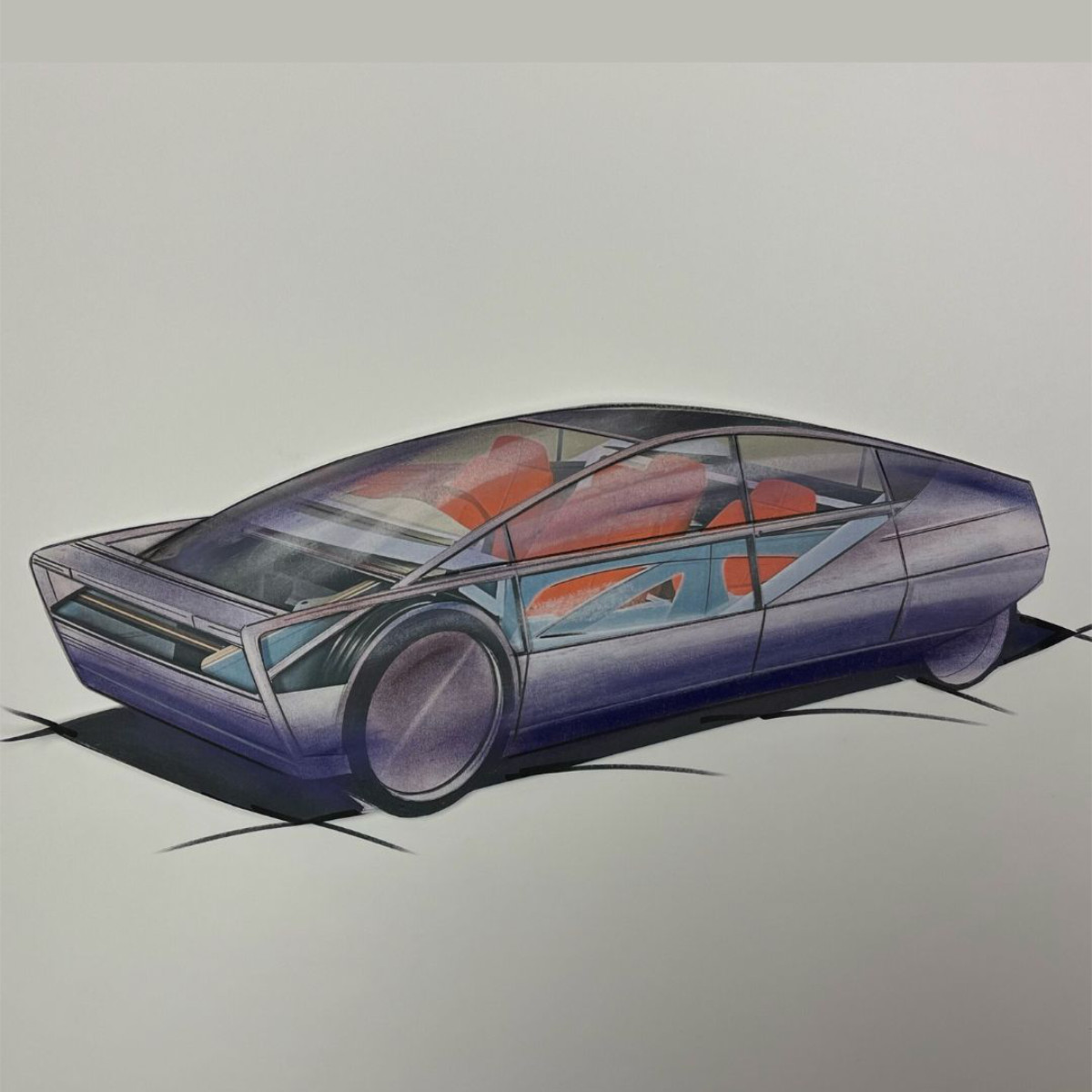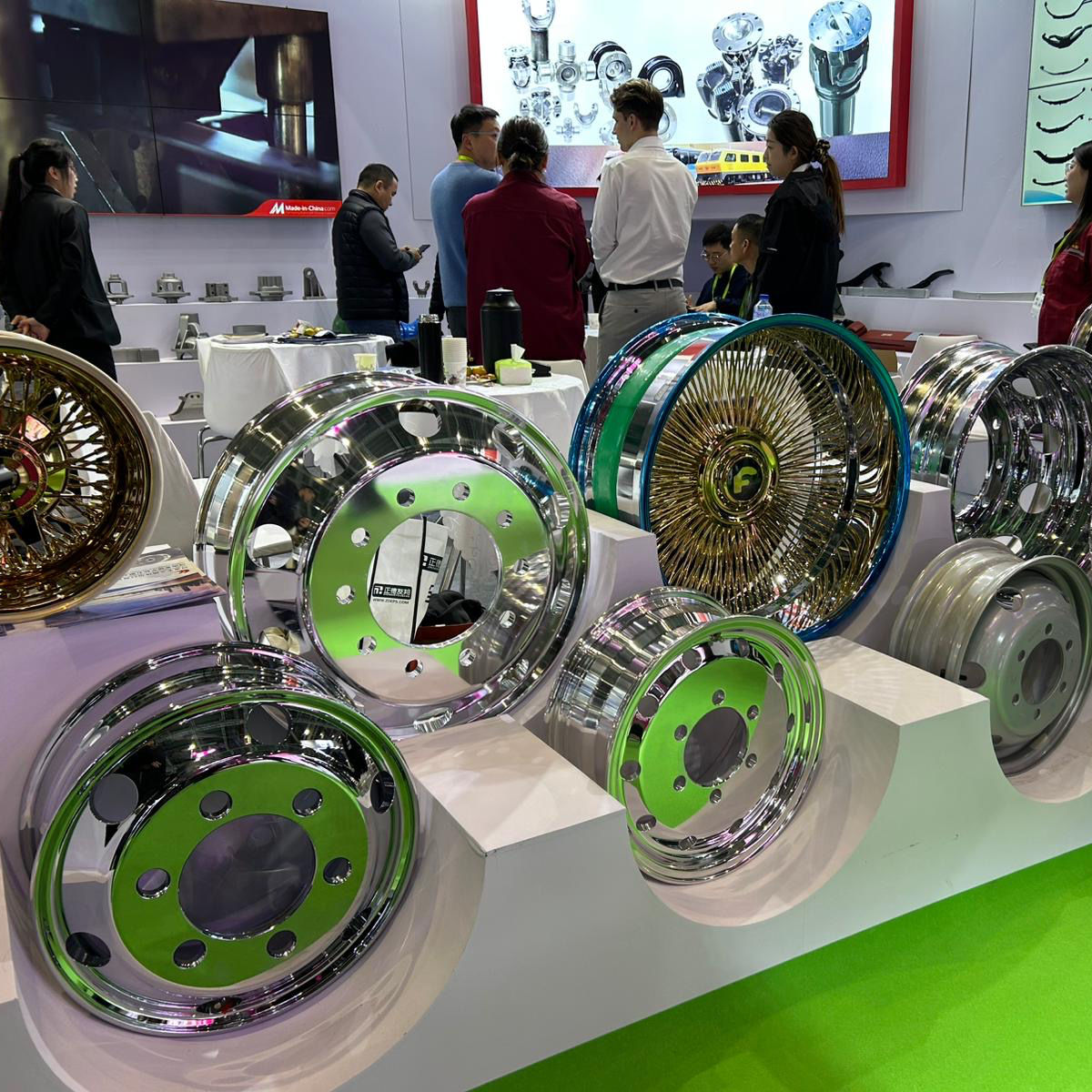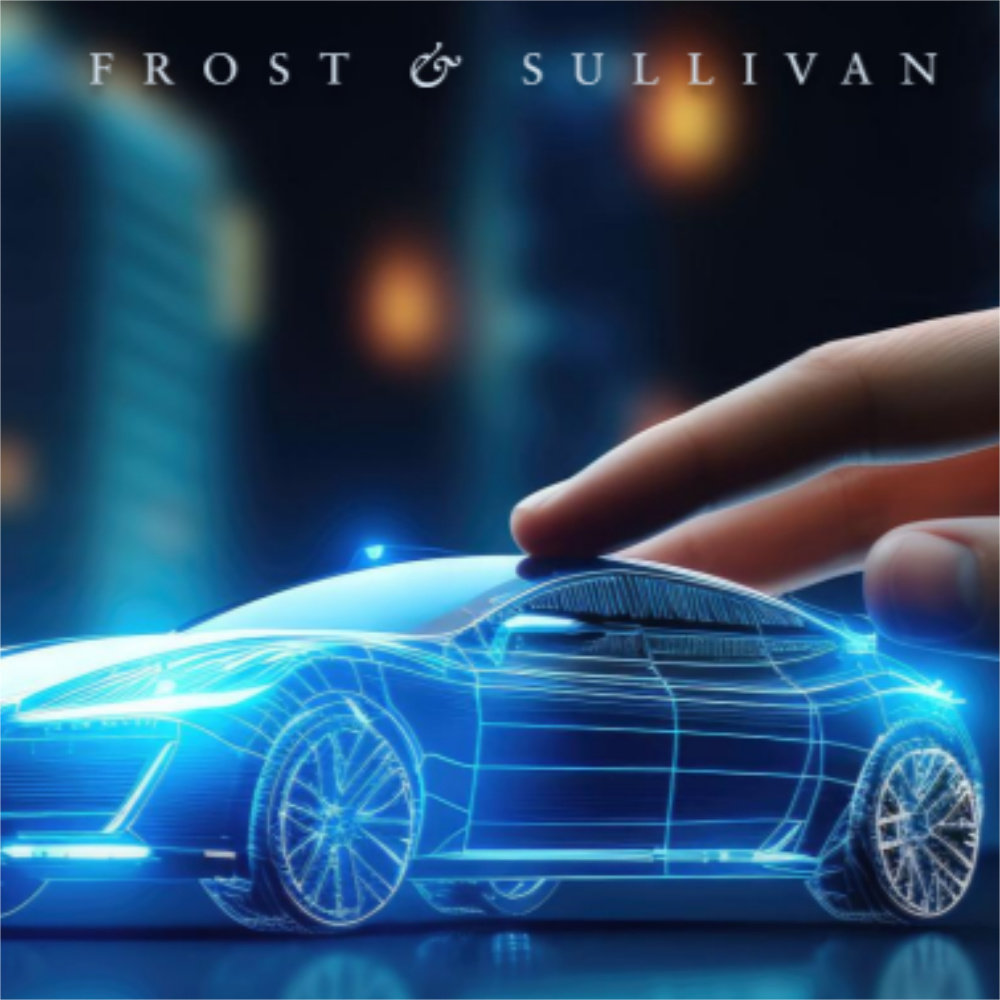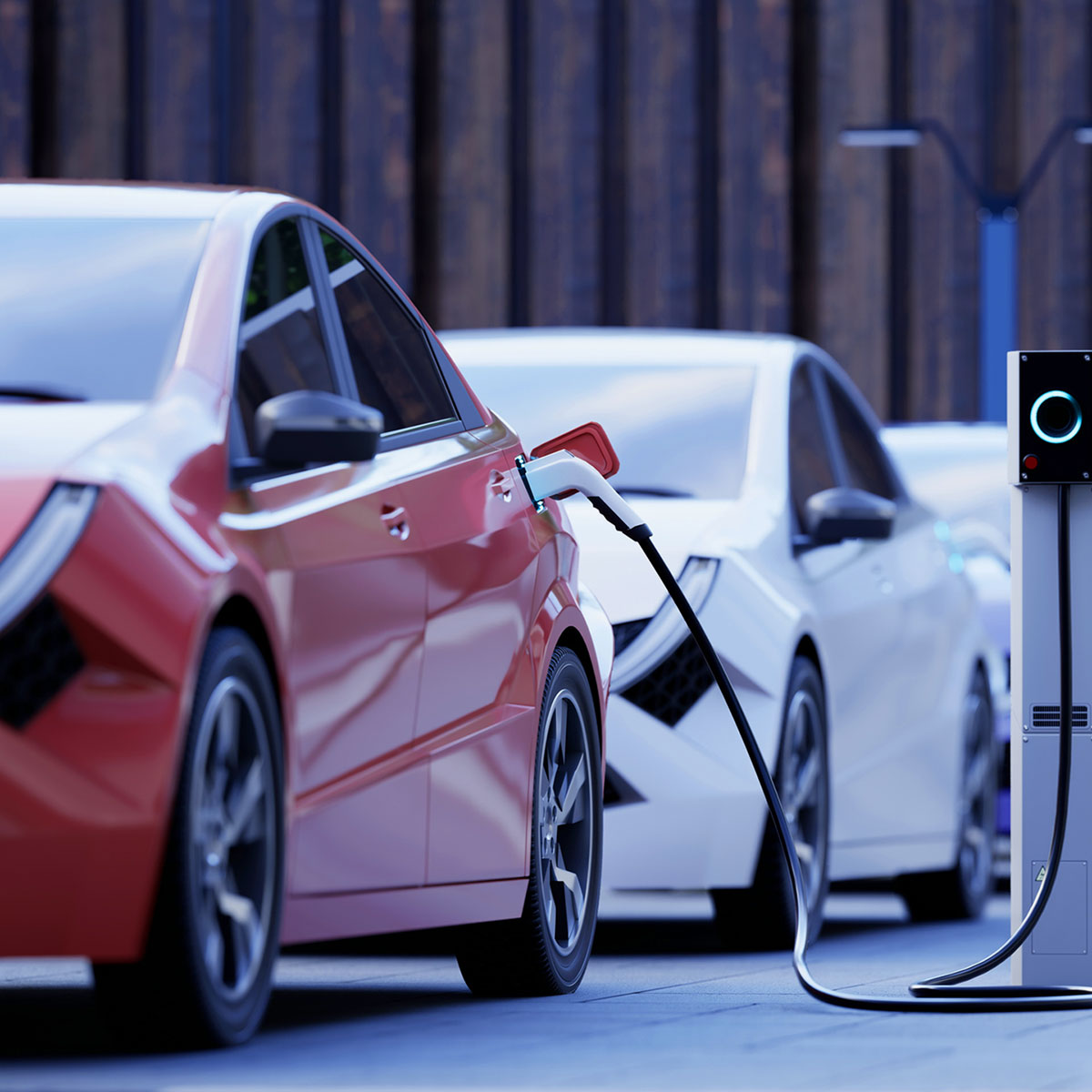Reading time: 7 minutes
Cylinders, engine size, cool design. Those are the terms that we used to discuss cars in. Today, it's not so much the physical features that make out a car – it's the software. Like smartphones, SDVs (Software Defined Vehicles) evolve from update to update. Overnight and “over-the-air” (OTA), vehicles update themselves, if not already today, then certainly tomorrow.
The main functions and features of an SDV are defined by software control. The vehicles are based on algorithms and IT platforms. The software controls the driving behaviour, the safety functions, the infotainment system that brings video conferencing and YouTube videos to the car's display – and, in the future, even the car's appearance. The options for bodywork range from digitally changing colours to varying headlight designs. Those who often drive on dark country roads, for instance, can ramp up their car’s basic light setup via download. This also opens up new perspectives for the used car market, as the buyer is no longer limited to the previous owner's choice.
The closest we have to a real SDV today are Tesla models, where assistance systems such as Autopilot can be activated via a software update. Mercedes-Benz, Porsche, and Audi also offer the option of activating individual functions after purchase for a fee – from seat heating to matrix lighting, keyless entry, remote diagnostics, and battery pre-heating. In each case, the necessary hardware must already be fitted ex works. Mercedes-Benz rear-wheel steering can already be unlocked to increase from four to ten degrees – if the customer wants to pay for even smoother cornering. And by 2024, 19.5 percent of all cars sold worldwide will be SDVs – that's 12 million cars!
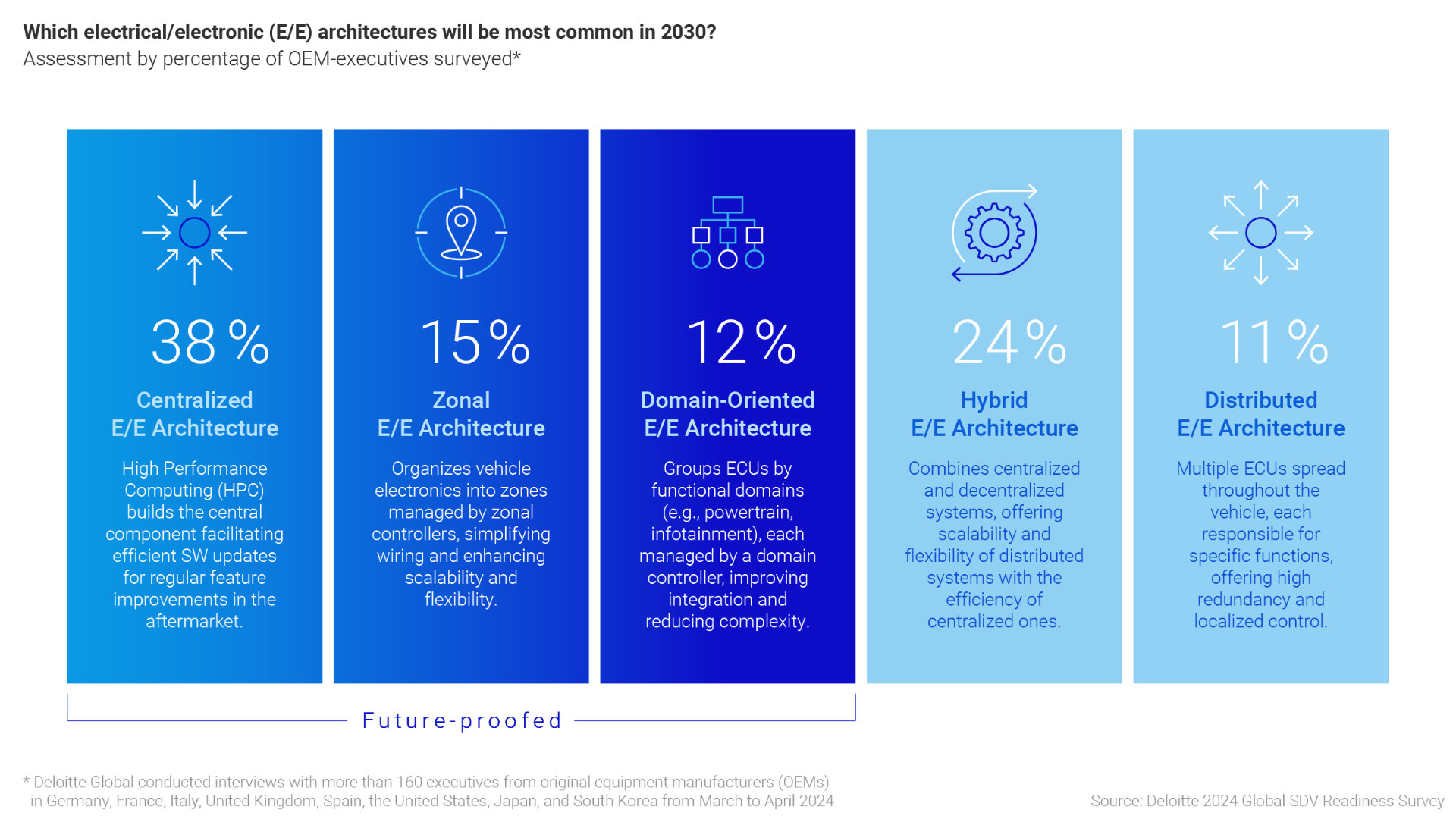
Big data in the car
The industry expects new revenue models from SDV. Estimates of how much can be earned by monetising features-on-demand and data over the lifecycle of a car are so high that it is possible to speak of a new business model for car manufacturers. The value chain is expected to be significantly extended, opening the way for carmakers to a data business that adds value to every car sold, which is actualised during its lifetime.
According to an international survey of executives conducted by consulting firm Deloitte in 2024, two-thirds of companies want to use the data they generate to work with third parties to provide personalised and enhanced services to their customers – and generate average annual revenues of up to $720 million over the next five years through monetising services. However, the studies also acknowledge that it may take some time before a sufficient number of monetisation models and pricing strategies are established. In the future, it may be possible to save on development costs by launching only basic models that can be customised into new models according to the driver's wishes – and which will eventually drive autonomously, which would be the logical end point of the evolution, at least for now.
To the Deloitte Study on SDVTransforming cars into SDVs
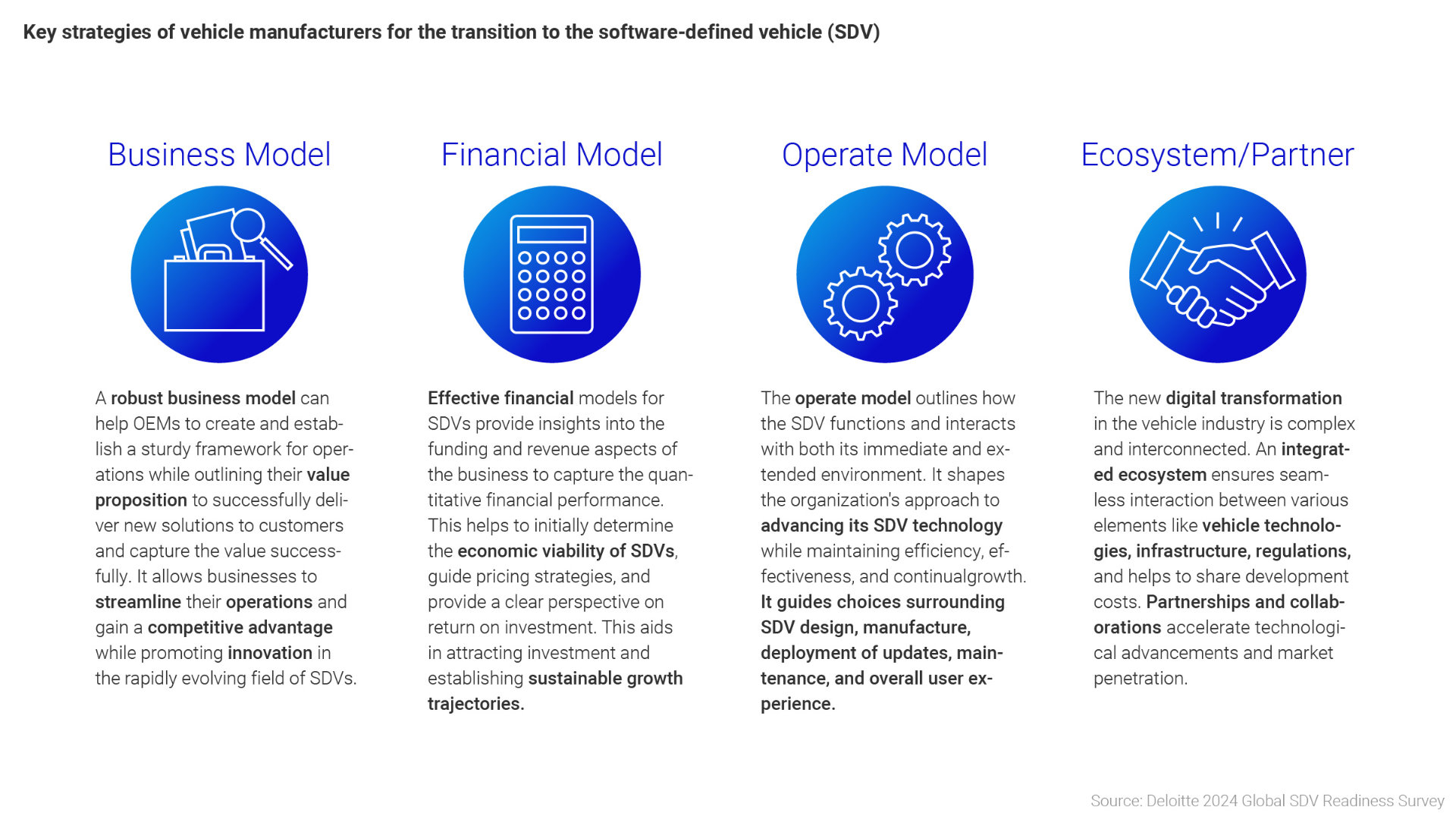
In any case, it all starts with investment. According to the Deloitte study, European manufacturers are currently investing three billion euros a year in the introduction of SDVs, which is a third of their total expenditure on research and development. This in turn puts pressure on cash flow and profitability and is increasing the pressure in the industry for the time being. The most hotly debated topic in the automotive industry at the moment is how to tackle the challenge of software-defined vehicles: how and in what order to develop an ecosystem comprising a business, financial, and operating model? It is undisputed that the industry needs to transform its entire software development. New manufacturers such as Tesla or Nio always have an advantage because they have been able to build on modern architectures on greenfield land without needing to build on pre-existing infrastructure.
Traditional manufacturers, on the other hand, lack the technological base to compete with new EV providers such as Tesla or niche providers such as Tencent in China – something they can compensate for through partnerships with IT service providers such as Microsoft, Nvidia or Foxconn, joint ventures such as VW's with Rivian, or the use of open source offerings. Utilising these increases the chances of keeping up with the extremely fast pace of global development and bypassing standardisation committees, which tend to be slower than development cycles. Currently, the most successful example of an open source solution is Android for infotainment, whose scalable platform has won over many CEOs.
Software must be simplified
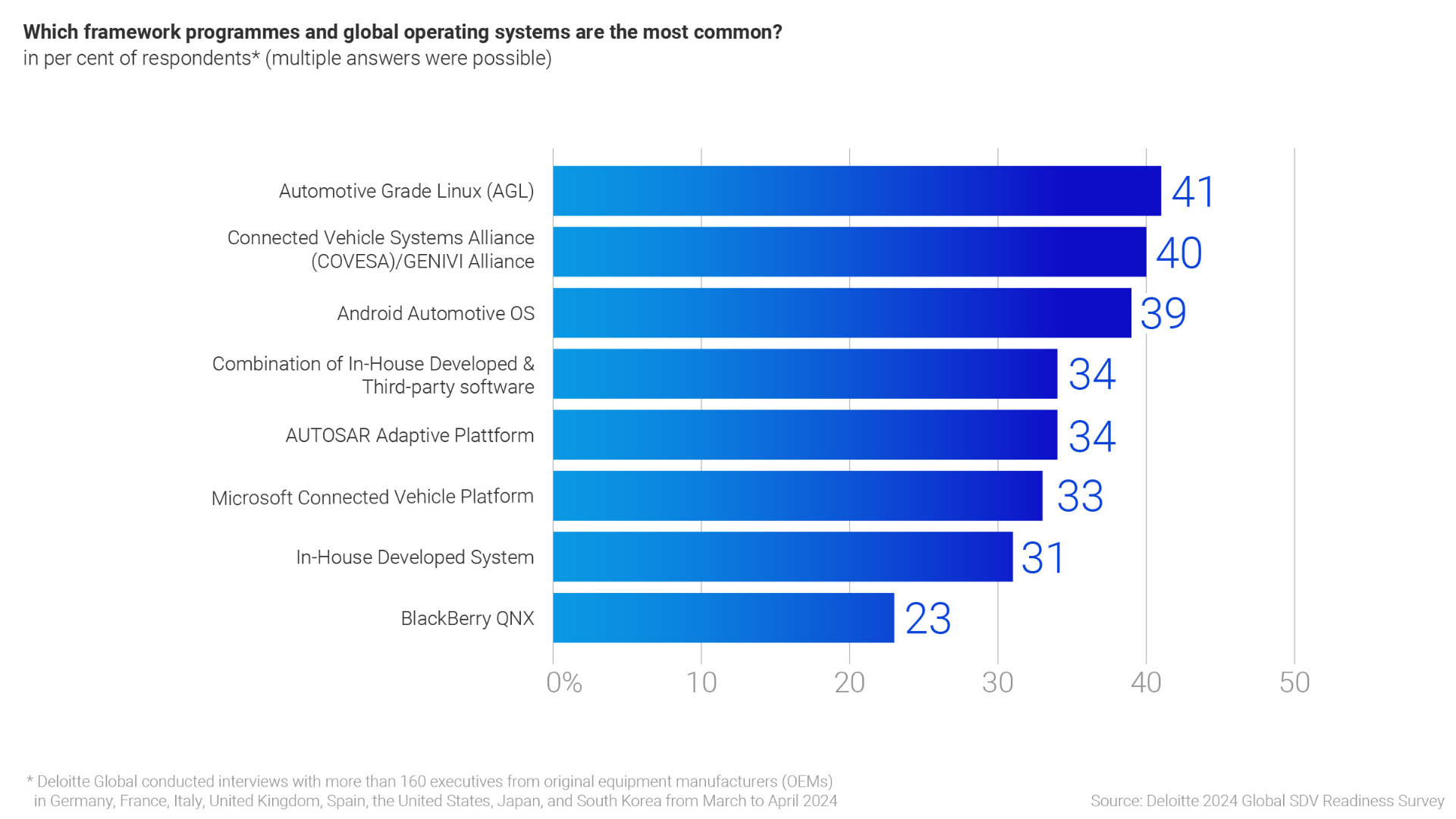
Manufacturers' previous uncoordinated approaches to software development and implementation have resulted in OEMs working with up to eight operating systems and up to 100 control units simultaneously in a single vehicle. “Companies are getting bogged down in unnecessary complexity and this is driving up costs,” says Dr Elmar Pritsch, Partner Software Defined Vehicles at Deloitte, “it would be important to significantly reduce the number of operating systems and harmonise interfaces.”
A study by the H&Z Group in Munich on “Software Designed Vehicles + Cyber Security” (2024) takes a similar line, arguing that a significant reduction in operating systems – in domains and zones, such as a driving zone and an entertainment zone – is a prerequisite for establishing effective cyber security according to clearly defined “security zones”. (See also the interview with Christian Koehler, Partner of the H&Z Group, entitled “E/E architecture must be rethought”).
The global market for SDVs has yet to sort itself out. It will tend to be segmented by functionality and price, as a solution that is ideal for one segment is not necessarily appropriate for another. It will not be economical to develop separate hardware and software for each segment and market region. And behind all this is the big industrial policy question of how to approach the Chinese market: Decouple or integrate? Another question is this: How close should hardware and software be linked to each other? A car can last ten or 20 years, a smartphone on wheels probably not. Will the software be supported for that long? If there are to be software updates, hardware updates must also be planned, using replaceable modules or cartridges.
Interfacing hardware and software
In June 2024, Tesla had to recall 1.85 million cars in the United States because the software was unable to detect that the bonnet had been improperly closed, increasing the risk of an accident. Nowadays, over-the-air (OTA) updates – not just at Tesla – are a milestone towards the future of vehicles that update themselves overnight. Calculations show how much money can be saved by not having to recall cars – and how operational safety and customer satisfaction increase as a result.
Tesla itself admits in its online service section “Tesla Knowledge” that while the Model 3’s braking performance and acceleration have been improved in the past via software updates, the other “new features” transmitted via Wi-Fi or the cellular network so far have been limited to installing “car wash mode” and Netflix.
